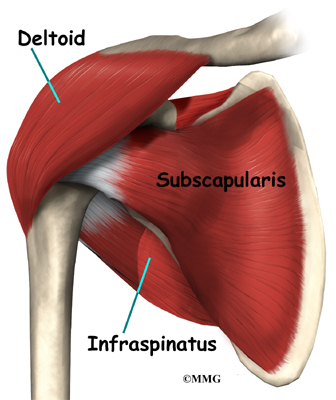
Your shoulder muscles, officially, are called the deltoids or delts. These muscles rest like a cap on top of the shoulder (the best way to see this is to hold your arm out horizontally). The delts are made up of three sections:
- Center: The top or medial deltoid is on top of the shoulder. When this muscle contracts, you can lift up your arm.
- Front: The front or anterior deltoid lies in front. When it contracts, your arm moves inward toward the center front.
- Back: When the posterior deltoid in the back contracts, your arm moves back to the midline and can even move slightly farther back.
Unfortunately, the rotator cuff muscles are so anonymous that many people don’t even know that these muscles exist and, therefore, don’t bother to train them. The only time they seem to get any recognition is when a professional baseball pitcher is sidelined for the season by a rotator cuff injury. Your rotator cuff muscles stabilize your shoulder joint and enable you to twist your arm while your elbow is straight, such as when you turn your palm to face forward and then backward. They also get into the act during throwing and catching motions and when you raise your arms above your head.

No comments:
Post a Comment